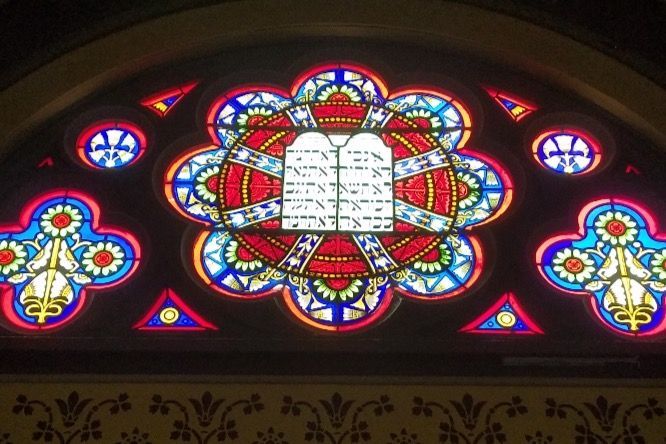Upon its construction on Charter Oak Avenue in 1876, Temple Beth Israel became Connecticut’s first purpose-built synagogue. With its twin domes and arched doors and windows, it also became an architectural jewel of the neighborhood. The congregation moved to West Hartford in 1935, but with the Charter Oak Cultural Center now operating there, the place remains as vibrant as ever, hosting everything from art exhibits and performances to free after-school programs for local kids.
But there’s a problem. As fund raisers put it: “The Rose Window, or more accurately the installation of multiple windows that form a visual centerpiece for our Bimah, is in serious disrepair. Nearly a century-and-a-half of harsh weather conditions have led to a potentially irreversible degradation of the stained glass, the frame, and the Bimah’s structural integrity. In short: it is in danger of collapse!”
A GoFundMe page has been set up for those interested in helping to restore the windows. Donations go to the Charter Oak Temple Restoration Association Inc., a certified charity.



